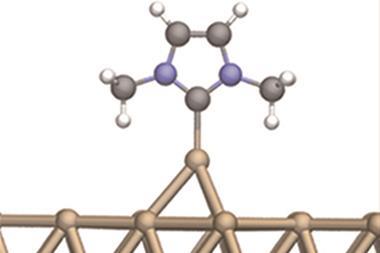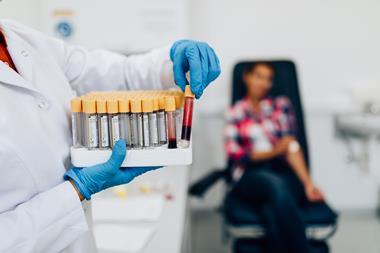Using N-heterocyclic carbenes rather than thiols to bond self-assembled monolayers (SAMs) to gold surfaces makes them much more robust, say researchers in Canada. Such stable platforms for attaching molecules to metal surfaces could be used to make sensors that stand up to more extreme conditions, where thiol-based monolayers would break down

Researchers at Queen's and the University of Toronto, led by Crudden and Hugh Horton, investigated assembling monolayers on gold with N-heterocyclic carbene (NHC) ligands. NHCs are unusually stable for carbenes, and can be produced in quantity and stored. They are significantly more reactive than thiols, and hence trickier to handle. The payoff, however, is that they form a much more stable bond to the gold surface, which remains completely inert for long periods in air and water; can be heated for 24 hours in boiling THF with no desorption; and is electrically more robust.
Hannu Häkkinen, a computational nanoscientist at the University of Jyväskylä in Finland, believes the research ‘may be a game changer’ that ‘will surely raise very broad interest in the community and will create several follow up studies.’ Aside from the sensing potential, he suggests the monolayers will interest molecular electronics researchers as ‘they provide a long-sought stable direct bond between gold and carbon and access from the conduction electron system of gold metal to the delocalised p-electron system of the organic part.’
Crudden and Horton's teams are now working on attaching the carbene ligands to gold nanoparticles, which could make them useful for drug delivery. Crudden also believes her group's forthcoming work will make synthesis of the monolayers easier. ‘At present, the main limitation of the work is the difficulty of generating the carbene, which is more sensitive than the thiol,’ she says. ‘But we have a new method that's going to make this a benchtop, air-compatible synthesis. You'll have to wait for that one!’
References
C M Crudden et al, Nat.Chem., 2014, DOI: 10.1038/nchem.1891







No comments yet